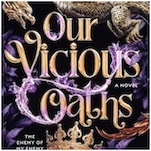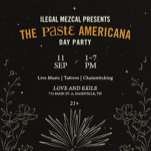The Best Whiskeys (And More!) of 2024
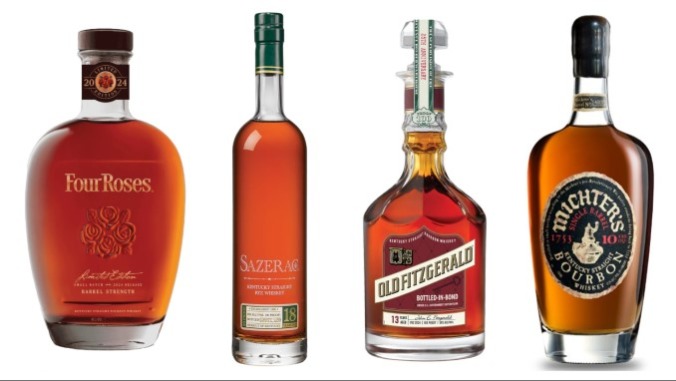
From where I’m sitting, the most prominent story of the American alcohol industry, across all lines of stylistic classification of spirits, wine and beer, is that the world of booze faces an increasingly uncertain future. Whereas in previous years, it seemed like there were always at least a few sectors one could point to with stories of unfettered growth–tequila! Malternative beverages!–those kinds of success stories are now few and far between, aside from the latest flash-in-the-pan trends that will peter out in the same way they always do. In the craft beer world, breweries are uniformly embracing “total beverage” mentality, diversifying to produce nearly any conceivable product other than traditional beer in a quest to shore up withering interest. Tequila finds itself finally flattening in the U.S., while revealing the widespread overplanting of agave that now becomes a burden rather than an asset. American wine faces similar challenges of overplanting and soft demand, and even hyped American whiskey prices seem to now be receding a bit, while formerly sought-after bottles are much more likely to collect dust.
All the signs point toward a story that is playing out not just in the U.S., but globally: Average alcohol consumption is decreasing among many individuals, particularly in younger generations. The result: Both global and U.S. beverage alcohol sales declined rather than grew in 2023 for the first time in three decades. These changes in consumption and culture surrounding alcohol–and the rise of “wellness” culture–are having a very real impact, and there’s no niche of the booze industry that can claim to be unaffected.
But at the same time, softening demand doesn’t imply a drop in quality of the bottles actually entering the marketplace–there were just as many great releases in 2024 in the world of whiskey (and rum, gin, agave, and beyond) as any of the previous years I’ve written about the categories at Paste. The trajectory of these industries (including our own, in publishing) may be murky, but that won’t stop us from celebrating the best that 2024 had to offer.
![]()
The 20 Best Whiskeys of 2024
To be considered in this section, whiskeys had to be either newly released in 2024, or hit the U.S. market in 2024.
Likewise, these picks have a tendency to trend toward limited releases and whiskeys with higher price tags, but be aware that we’ve given a few special value awards at the end of this piece. And of course, you can always consult our blind tasting of bottom shelf bourbon brands, if you’re looking for the best bang for your buck.
Please note, these are not ranked—I’ve simply listed them in alphabetical order. They include everything from bourbon and rye to new scotch whisky releases.
Baker’s 13 Year Old Single Barrel Bourbon (2024)
MSRP: $150
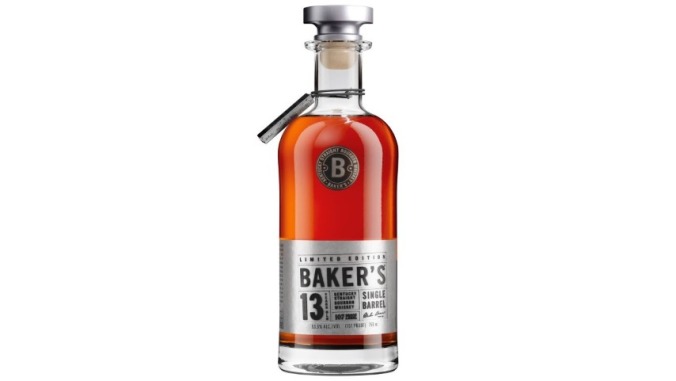
I’ve just accepted at this point that Baker’s is always destined to be one of those brands that gets overlooked because it fits neatly into a relatively small niche in the parent distillery’s portfolio–in this case, between the cask strength intensity of Booker’s and the year-round good values offered by Knob Creek. Baker’s may have reinvented itself as a single barrel bourbon a few years ago, which does give it a bit more conceptual distinction, but at the end of the day this is just an opportunity to get some well-aged Beam bourbon, which is rarely a negative. And indeed, I ended up liking this year’s expression of the extra-aged Baker’s release a touch more than the prior 2023 bottling. As I wrote when tasting it:
On the nose, my tasting glass is awash in classic, extra-aged Beam bourbon notes. It’s distinctly nutty and roasty, favoring almond butter a bit more than peanut, with very dark caramel and glazed nuts, vanilla frosting, clove spice, cherry-like fruit, and slightly musty rye grain. Increasingly, it turns a bit more toward the savory, with elements of tobacco, leather and a little anise. On the palate, this leads off with nice, sweet caramels and some cherry, along with more of that almond nut butter. Charred oak and more of those savory characteristics follow, with delicate tobacco. I’m also getting something that is evocative of charred sweet corn off the grill, which is an interesting characteristic that doesn’t immediately come to mind with Beam. The whole profile does a nice, gentle transition from moderate residual sweetness to lingering, roasty nuttiness and oak with modest drying tannin.
Bardstown Bourbon Co. High Wheat Bourbon
MSRP: $50
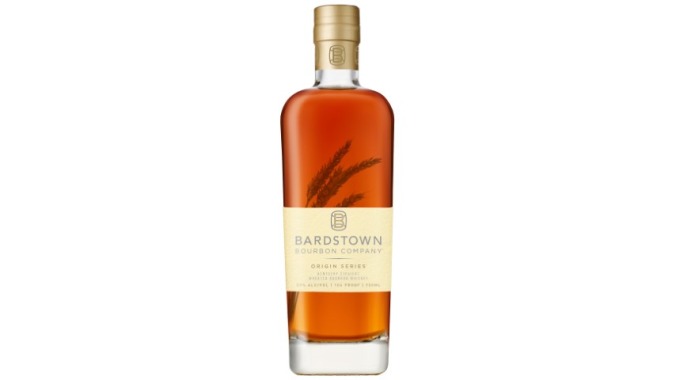
Since launching in 2023, Bardstown Bourbon Co.’s Origin Series of ryed bourbon, wheated bourbon and rye whiskey have represented some of the most dynamic and best-priced drams on the shelf wherever they’re sold, but no longer can we call the series a “trio.” It expanded this year with the addition of a second wheated bourbon, this one calling itself High Wheat, being made with a mash bill of 53% corn, 39% wheat and 8% malted barley, pushing it practically into the territory of full-on wheat whiskey–a demographic I’m always surprised to see isn’t exploit more often, considering the fervor for wheated bourbon. This one is also presented at a slightly greater strength (106 proof) than the other bottles in the Origin Series, while retaining the $50 MSRP, a level that wouldn’t have seemed exceptionally friendly a decade ago but sure as hell does these days. The results are fantastically welcoming, as we noted when originally tasting:
On the nose, this is really bright, positively sunny in disposition, drawing you in. There’s a lot of citrus and fruit here, suggestive of orange slices and apricot jam. There’s also a very enticing caramel cream, along with vanilla and more subtle cocoa. Another thing that really stands out? A whole lot of bready, doughy wheat on the nose. One might say “well sure, with that much wheat in the mash bill,” but in my experience the actual aromatic character of the wheat grain isn’t something that tends to present very strongly in a lot of wheated bourbons. Here it really does, like toasted strands of wheat, adding a nice novelty to this profile. It closes with spice notes that are a bit like fennel seed, and the melding of chocolate and mild oak. On the palate, this is quite rich and sweet in nature–I’m getting a whole lot of caramel and some honey candies, along with vanilla bean, more bright lemon and orange citrus, and peach crumble. There’s a malty depth to the sweetness here, and something like Cream of Wheat with brown sugar or molasses. There’s also a good degree of sweet oak, with some wood spice creeping in as well, and reprises of the cocoa from the nose. It drinks very easily for the proof point, with the ethanol being effortlessly integrated.
Booker’s Bourbon “Beam House Batch” (2024-02)
MSRP: $100
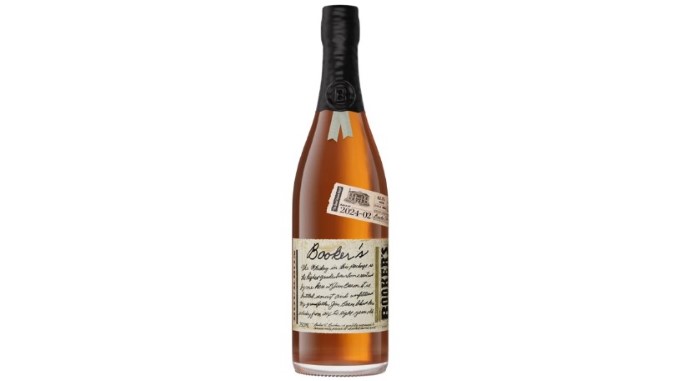
In my experience, in any given year there tends to be one Booker’s release that hits the sweet spot of my own palate, and for 2024 that was the second expression, the Beam House Batch. There’s always a question of value with Booker’s, which now sports a $100 MSRP–a lot for any 7-year-old bourbon, even at a cask strength of 124.6 proof. Suffice to say, it all comes down to the tasting notes in any given batch, and I appreciated the elegance and older character beginning to creep into the Beam House Batch in particular. As I wrote when tasting:
On the nose, there are some nice, sweet elements here, but this also stands out to me as a somewhat more fruit-forward batch of Booker’s than we typically see. Often, these bottles amplify some of the core Beam traits–vanilla, nuttiness, etc.–into overdrive, but this nose seems somewhat more nuanced. I’m getting vanilla frosting and a deeper, molasses-like caramelization, along with Tootsie Roll-like chocolate, toasted malt and ribbons of dried fruitiness. That fruit plays well with ethanol that is surprisingly restrained here on the nose, which is always nice to find. At the same time, I don’t find this to be the MOST expressive of Booker’s noses overall in terms of overall intensity–but at the same time, it’s more nuanced. On the palate this one is very sweet and rich, one of the sweeter Booker’s batches I’ve run across in recent memory, which is not a bad thing. Heavy caramel is met by lots of vanilla and some peanut butter, but the dried fruit also returns in the form of raisin and fresher dates. The darker caramels also register here again, as molasses or sorghum-like sweetness. This is quite rich and desserty as a vibe, transitioning into some barrel char and trailing hints of tobacco, pepper and leather. There are faint elements of older Beam characteristics starting to creep in here, which lends the Beam House Batch a nice sense of composure, as does the similarly restrained ethanol on the palate for this proof point. This doesn’t feel like younger, wilder cask strength bourbon, and I like to see that with Booker’s.
Chattanooga Whiskey White Port Cask Finished Bourbon
MSRP: $60
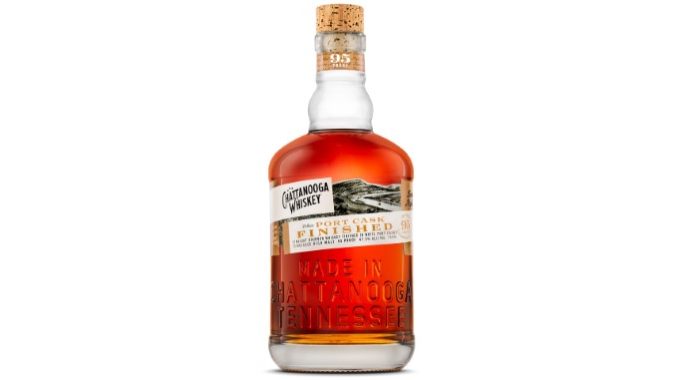
I tasted a good number of various blends and finished bourbons from Tennessee’s Chattanooga Whiskey this year, but the one I keep coming back to is the elegant and unusual White Port Cask Finished Bourbon. As part of a series of finished “high malt” bourbons that have featured casks such as pinot noir, Islay scotch casks and tawny port over the last few years, this one could easily have gotten lost in the shuffle. But the particular white port cask treatment here lifts up a younger blend of high-malt bourbons into something truly exemplary and beautifully complex, as we wrote at the time:
On the nose, this dram displays deep, rich caramel that is immediately enticing. There’s a sweet, cooked maltiness, slightly syrupy in nature, along with stewed plums, aromatic cinnamon and hints of spicy oak. Ethanol is almost entirely absent, allowing you to nose very deeply. The toastiness of it is very engaging and comforting, with biscuite-like tones that merge into brown butter and vanilla with hints of allspice. It’s all very accessible, thanks to the integration of the booze, which is super impressive with a younger age statement like this. On the palate, the deep dark fruitiness and stone fruit flavors stride to the forefront, with bruleed plum and peach met by toasted oak and dusted with cinnamon brown sugar. The malty sweetness enhances waves of ripe red fruit and vinous notes, tempered by supporting spice and trailing pepperiness. Subtle flourishes include hints of earthiness and very subtle smoke. The overall impression is rich without feeling “unearned” or overtly sugary. This really reflects the best possible attributes that the cask likely had available to impart, in my opinion.
Colonel E.H. Taylor Barrel Proof Rye Whiskey
MSRP: $78
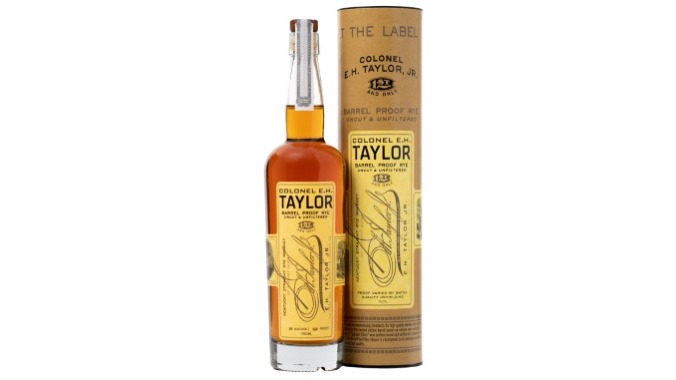
I’m always sort of fascinated by the way various rye whiskeys from Buffalo Trace have been swept up as secondary participants in the bourbon hype era–not pursued quite the same way as the company’s most hotly desired bourbons, but dragged along by the current nonetheless. Lost on some consumers is the fact that rye whiskey in the E.H. Taylor line is actually a very different rye whiskey mash bill than the flagship Sazerac line, being an unknown “high rye” mash bill that may not actually contain any corn at all. In truth, rye whiskeys from Buffalo Trace have rarely been personal favorites, which made the 2024 expression of Colonel E.H. Taylor Barrel Proof Rye (at 126 proof) one of the year’s most pleasant surprises for me. As I wrote when first tasting it:
On the nose, sweet impressions swell up right away, with lots of caramel and orange cream, along with butterscotch and dried stone fruit, mostly apricots. There are layers of floral impressions and more green rye spice here, along with an impression of glazed nuts. This is a pretty sweet nose overall for even a Kentucky-style rye, and I get the sense that the proof has contributed pretty significant sweetness/richness in this expression. On the palate, E.H. Taylor Barrel Proof Rye displays big sweetness and pepper right away, with heavy spice and herbal rye tones, and a little grassiness. Sweetness comes across as honey and a little butterscotch, with apricot and juicy orange fruit. The overall approach is big and bold–things are cranked up to maximum assertiveness here. With that said, the proof is actually incorporated quite well, and this doesn’t read as particularly hot for the proof point. That allows the sweeter side to play itself up more, with layers of honey and fruit, tamed by modest spiciness, herbal flashes and trailing oakiness evoking both sawed lumber and freshly charred oak. This latter note contributes some moderate astringency, keeping the dram from feeling entirely candy-like.
All in all, this one comes in swinging with a bang, providing one of the boldest takes out there on rye whiskey from Buffalo Trace. It’s not the most delicate, but I imagine that most of the target consumers will quite enjoy this. I generally hate descriptions that attempt to pitch new products as “a rye for bourbon drinkers,” but this is one of those scenarios where the profile and sweetness probably will make it a very popular crossover.
15 Stars Timeless Reserve Bourbon
MSRP: $280
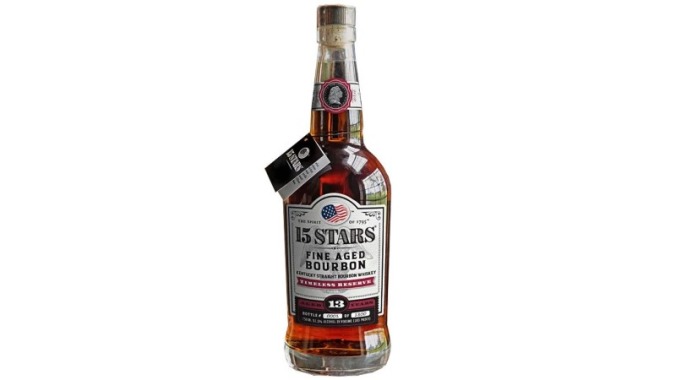
Timeless Reserve is an especially luxe blend from 15 Stars, but it demonstrates the blending skill that has rapidly earned the company a reputation as one of the best non-distiller producers making whiskey in the U.S. right now. It describes itself pretty simply as “a blend of Kentucky straight bourbons aged at least 13 years,” but presumably includes even older distillate in the blend, potentially from multiple distillers. Its strength of 51.5% ABV (103 proof) is advanced enough to make for a flavorful dram, although the proof hounds in the audience would no doubt have liked to push it even higher. Regardless, it offers an absolutely classic well-aged Kentucky bourbon experience, as I wrote when sampling:
On the nose, this one really indulges in heavy caramel and vanilla. There’s a lot of nuttiness as well; glazed pecans and caramel-covered nut bars. Fruity highlights show up in the form of orange peel and a little medicinal cherry, while notes of maturity are there in antique oak and more than a little leather, with hints of herbal rye. This is a very classic extra-aged Kentucky bourbon kind of nose, increasingly trending toward sweet impressions like toasted marshmallow and maybe a little bananas foster. On the palate, this is actually quite nutty at first, with honey glazed nuts and citrus, joined by the distinct impression of dried banana chips. I’m getting vanilla bean and certainly plenty of caramel, supported by a viscous texture. It then turns toward the savory and more specifically leathery side, with quite a lot of antique leather, pipe tobacco and a more savory oak dimension, with delicate tannin. Ethanol on this one is notably more gentle than in the Three Kings, and the overall impression is one where the flavors are more integrated and balanced overall. It may be a tad less bold in its delivery than the Three Kings, but I appreciate some of the classic structure here, and its elegant integration of alcohol and oak. I’m not sure this is quite the equal of the 15 Stars Platinum–further testing necessary–but it’s another worthy entry in the limited release series from one of the best blenders in the game today.
Four Roses Limited Edition Small Batch Bourbon
MSRP: $220
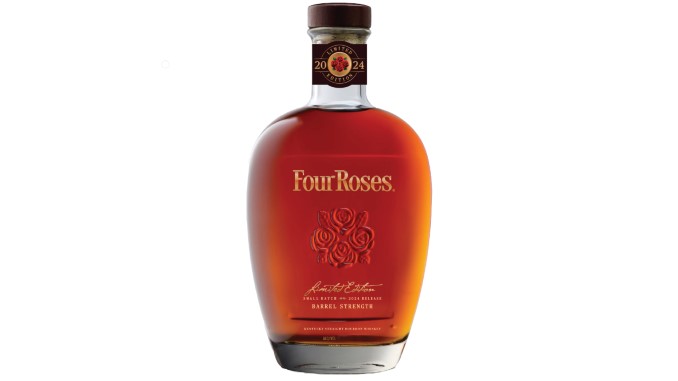
Four Roses LE Small Batch is perennially one of the releases I’m looking forward to the most in any given calendar year, and it almost never falls short of expectation. This year provided yet another outstanding release for the company’s most sought-after blend, selected by Master Distiller Brent Elliott as a selection of four bourbons between 12 and 20 years. This year, those included:
— 12 year old OBSV
— 15 year old OESK
— 16 year old OESF
— 20 year old OBSV
The resulting bourbon is non-chill filtered and bottled at 54.1% ABV (108.2 proof). It’s a fairly standard type of recipe blend for this annual release, as many of them are often based around the “V” (delicate fruit) and “K” (baking spice) yeast strains, with the most notable inclusion here for whiskey geeks probably being the 16-year-old OESF. The “F” yeast strain (herbal, minty) doesn’t show up quite as often in Four Roses products, though it can be found featured prominently year-round in the Small Batch Select, and was last in the 2022 Limited Edition Small Batch. This year’s batch, though, is particularly special, as I wrote when tasting:
On the nose, the first thing you note here is that for a bourbon with such mature whiskeys in it, this retains an amazing degree of brightness. It’s hard to describe to a non-drinker what an adjective like “bright” would really mean in this context, but it’s really the defining characteristic here. It’s a certain suggestion of acidity, a liveliness that pairs well with fruity impressions, and that’s something this expression has in spades. On first pass, there’s lots of citrus and stone fruit (apricot) leaping out of the glass, pairing nicely with vanilla bean, mint, and fresh herbal rye with a slightly green feel to it. This is married to decadently rich caramel notes and some sweet oak and cocoa, which balance the brighter fruit impressions with character that reflects the age statements and maturity of the blend. It closes with baking spice, landing between cinnamon brown sugar and clove, with some moderate ethanol heat. The overall profile suggests nothing as much as a fresh baked fruit tart, and it is really gorgeous.
On the palate, the super bright fruitiness carries through with lively notes of citrus, but then veers simultaneously into darker cooked fruit/jammy tones that I wasn’t getting so much on the nose. Cherry and red berries are a huge and winning note here, with a vibe suggesting cherry candy and milk chocolate, along with sweet oak that has the slightest woody tang to it. Quite sweet overall, this brings toasted dessert baking spices, along with light honey toffee and wisps of peppery rye grain. A little tingly ethanol heat hints at the proof, but this is pretty gentle overall, allowing the drinker to simple revel in all the developing waves of luscious fruit and spice.
Jack Daniel’s Coy Hill Barrelhouse 8 Whiskey
MSRP: $80
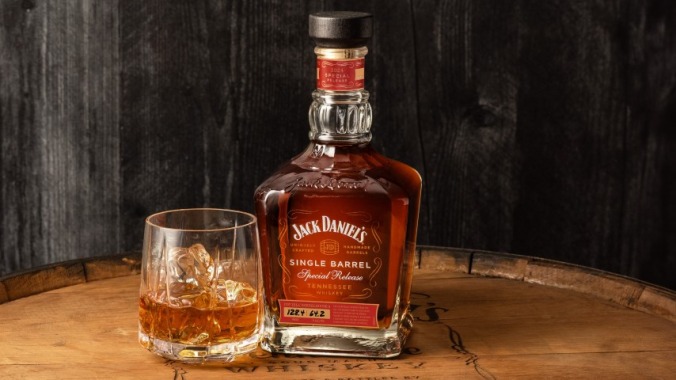
Few individual whiskey limited releases of the last few years have caused quite the level of splash that Jack Daniel’s Coy Hill did when its first two batches burst onto the scene in 2021 and 2022. Put simply, most drinkers had never seen anything like this out of Brown-Forman in the past, and certainly not with the broadly accessible Jack Daniel’s brand most famous for the 80 proof shelf staple Old No. 7. The Coy Hill High Proof releases shattered all previous associations of the limits of “cask strength” for the brand, blowing straight past “hazmat” and into uncharted territory. Most of the batches landed in the mid-to-high 140 proof range, while a couple even breezed to numbers like 153.2 and 155.1 proof! We are talking rocket fuel, here.
The 2024 releases, meanwhile, are slightly different–they don’t contain the words “high proof,” although these are all cask strength expressions between 122 proof to 137.5 proof. My own sample weighed in at 134.7 proof and still proved to be incredibly packed with flavor, as I wrote when initially tasting:
On the nose, the 2024 Coy Hill Barrelhouse 8 displays intense (but sweet) oakiness and very deeply caramelized sugars, evocative of molasses and toasted panela sugar of the sort you’d find in Latin America. I’m also getting gingerbread and a more savory mint/rye combo, along with cooked blackberry and considerable sweetness. There’s definitely some of the heat you’re no doubt expecting as well, although 15 minutes or so in the glass helps the ethanol to largely blow off. On the palate, the first thing that comes to mind is that the trademark Jack Daniel’s banana note has reemerged here in flambeed fashion, coupled with deep caramels, vanilla and sweet oak. The oak has a very luxuriously sweet dimension to it, although it occasionally dips a toe into a more tart, woody dimension as well. Quite sweet and concentrated overall, though, this displays syrupy dark fruit and roasted desert banana, with loads of brown sugar, pepper and waves of oak that are both sweetly charred and a little dusty. The heat is sturdy, but never really anywhere close to overwhelming. Personally, I tend to prefer cask strength whiskey in the 115-130 proof range, but this one is never too aggressive. Throughout the whole experience, it’s the sweetness really carrying it through to the finish line.
Longmorn 22 Year Old Single Malt Scotch Whisky
MSRP: $440
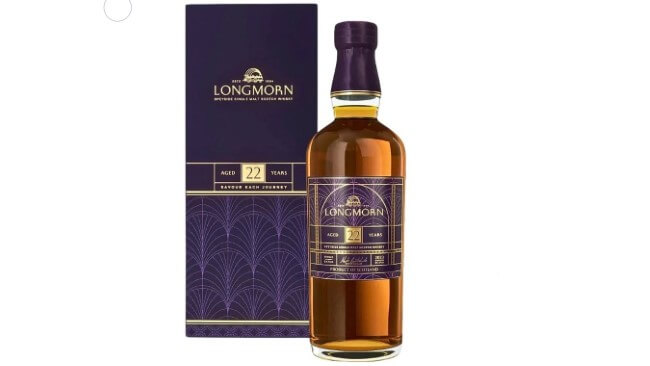
Longmorn isn’t a name that will be particularly well recognized by U.S. scotch whisky geeks, largely for the fact that they’ve rarely had any expressions of their own over the years. The distillery has been in operation since 1893, but like so many other classic Speyside distillers the majority of their history has been as the maker of malts used in major scotch whisky blends. Ownership has fluctuated over the decades, as Longmorn was acquired by The Glenlivet Distillers Ltd. in 1970, which was bought by Chivas Brothers in 1978, and itself absorbed by Pernod Ricard in 2001. Most of the Longmorn distillate that drinkers have encountered has been as a backbone, unsurprisingly, of various Chivas Regal blends.
But now, they find themselves in the spotlight, standing on their own with a profile of two new luxury expressions that take advantage of the distillery’s deep stock of aged whisky. Longmorn 18 Year Old and Longmorn 22 Year Old are both intended for the U.S. market, taking square aim at the ultra-premium segment–a bold choice for a brand with little name recognition. Both are bringing the whisky geek bonafides, though, being non-chill filtered and presented at impressive cask strengths. The 22 Year Old particularly captured my imagination, as I wrote when first tasting it:
On the nose, the 22 Year Old presents with drier notes of aromatic oak and nutty cocoa. There’s a decidedly less rich and sweet approach here, replacing some of the fresh and candied fruitiness of the 18 Year Old with more of a dried fruity and nutty character, somewhat vinous in nature. On the palate, these impressions carry through and do indeed stake a claim to this being a significantly different profile than the 18 Year Old. I’m getting significant nuttiness and milk chocolate here, with vanilla cream and expressive dried dark fruit and vinous tones. Sweet oak spice and increased oak tannin dry out the sip slightly. There’s so much nuttiness and winey fruit, in fact that it almost seems like something influenced by PX sherry casks. This profile in general is not as purely flavorful or explosive as the stronger 18 Year Old, but is instead deeper, dark and quite soulful. This is the more contemplative dram–the kind of scotch that people who don’t drink scotch imagine someone is drinking in a hunting lodge in a high-backed leather chair in front of a roaring fireplace. Call that romanticism, but it’s the image that is conjured up by this profile.
Michter’s Bomberger’s Declaration Kentucky Straight Bourbon (2024)
MSRP: $120
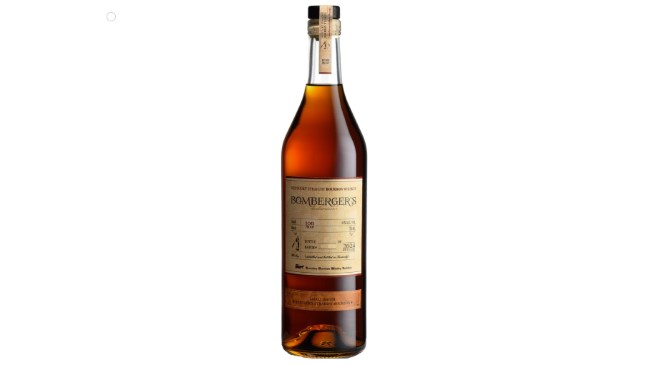
The Bomberger’s brand continues the Michter’s Legacy Series in reference to how the original Shenk’s Distillery changed its name to Bomberger’s in the 1800s, before that name eventually became Michter’s in the mid-20th century. This is a more conventional blend of Kentucky straight bourbon whiskeys, presumably with some decent age on it, although it’s non-age-stated and the source distilleries aren’t disclosed. Michter’s does let on that the 2024 release of Bomberger’s includes some malted rye in the mash bill, much as this year’s Shenk’s also does. It also continues the use of “some” Chinquapin oak, air dried and seasoned outdoors for 36 months before toasting and charring–which is a very long time for oak drying–in order “to accentuate the dark chocolate and stewed fruit notes in this big whiskey.” Regardless, it’s a winning profile, as I wrote when first tasting it:
On the nose, this release to me first evokes butterscotch and glazed nuts, along with caramel corn, brown butter and a harder-to-place fruitiness that I eventually pegged as something akin to strawberry. There’s some slightly exotic baked/cooked fruit notes here that are interesting, along with pleasant secondary notes of baking spice–especially nutmeg–and a slight bell pepper-like vegetal/herbal note. On the palate, this turns pretty sweet, with plenty of caramel and vanilla buttercream, pecan praline, some charred oak, toasted marshmallow and heavy toasted oak spice of the sort that I so often associate with the uniquely “toasty” wood profile of many Michter’s bourbons. The impression is comfortably familiar to me–center of the bullseye Kentucky bourbon characteristics with some nice, toasted oak layers of complexity.
Michter’s 10 Year Bourbon (2024)
MSRP: $185
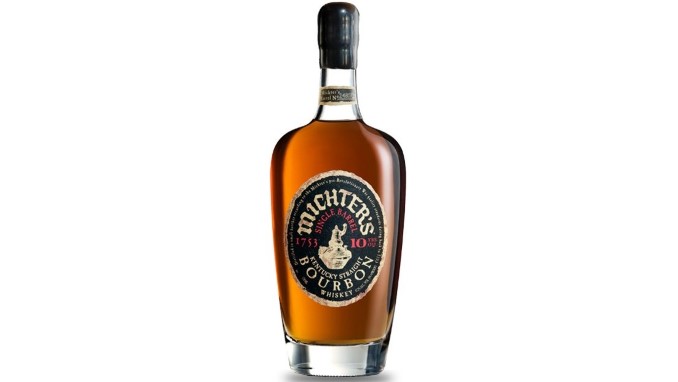
When it comes to the specs, things are always a bit of a mystery when it’s Michter’s. These older releases in the Michter’s “Limited Production” series are still sourced (I believe), but the company has forever been tight-lipped about their sources and any finishing practices. Suffice to say, this is a 10-year-old age stated bourbon, though with Michter’s there’s always a likelihood as well that this is the age of only the youngest distillate, and it may also contain older bourbon as well. Like most of the older Michter’s batches, it also has a fairly modest strength of 47.2% ABV (94.4 proof). And it’s always worth noting that this is a single barrel release, with this particular barrel I’m sampling being #24A0130. It carries the type of painfully high MSRP we tend to associate with the Michter’s brand, at $185. At least it can back it up, right? That proves to be an understatement, as this release garnered one of my highest scores of 2024. As I wrote when first tasting it:
On the nose, the first impression of Michter’s 10 Bourbon is of deep, old oak–charred and quite sweet, evoking deep underlying nutty cocoa and dark chocolate bar. Under that roasty sweetness I’m getting semi-burnt creme brulee and quite a bit of marshmallow, with vanilla buttercream and hints of underlying rye spice. After it sits out for a longer period, more flambeed banana and maple syrup are coming to the foreground. Ethanol is quite muted, which only makes sense for this combination of age statement and proof point. It smells fantastic; increasingly decadent every time you put your nose to the glass. On the palate, the huge, sweet oak notes really shine through–this Michter’s 10 batch is just massively flavorful for the proof point. Rarely do you taste anything in the mid-90 proof range that can bring this kind of depth to bear. I’m getting tons of sweet oak and char, sweetened French roast coffee and lots of toasted marshmallow and vanilla buttercream. There are flashes of herbal rye, and more mature notes of leather and mild tobacco. The overall impression touches repeatedly on chocolate-covered espresso beans and some caramel chews, with brief dalliances into some very dark fruit, perhaps blackberry compote, and mild cinnamon. It’s the oakiness that really steals the show, however–this captures the sweetness you can find within “char” extraordinarily well. Over time, this sip increasingly closes with a lingering impression of maple syrup that is also quite enjoyable.
New Riff Distilling 8-Year Bourbon
MSRP: $68
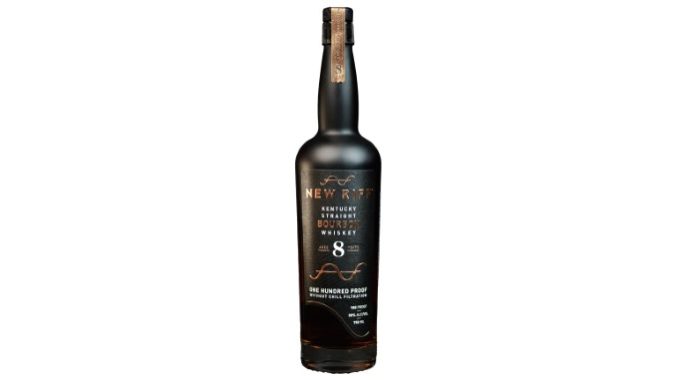
Newport, Kentucky’s New Riff is a distillery that has really and truly come of age in the handful of years since they first started releasing bottles into the wild in 2018. It was already notable at the time that the folks behind the distillery had been patient enough to wait to release their first bourbon until it qualified for bottled-in-bond distinction, but it has become increasingly clear over time that very special things are happening with this whiskey as it achieves greater maturity. The inaugural release in 2024 of New Riff’s 8-Year Bourbon is really a coming out party for just how great their spirit really is, and it even manages to be a solid value at the same time. Suffice to say, I was deeply impressed with New Riff in 2024, and especially with this bourbon, as I wrote when first tasting it:y
On the nose, New Riff 8-Year-Old Kentucky Straight Bourbon immediately feels like a comforting classic. I’m getting prominent impressions of chocolate-dipped cherry cordials, caramel chews, vanilla, rye spice and nutty cocoa, along with emerging mature elements of old oak. There are traces of musty rickhouse funk that recall some of the other major Kentucky stalwarts, along with a little antique leather and caramel corn, with those caramelize sugars verging toward the slightly burnt nature of creme brulee or flan with vanilla custard. A slight sting of ethanol hints at the proof point. On the palate, the classic impressions continue with lots of bright cherry, but also more cooked, syrupy, concentrated impressions of decadent dark fruit, swirled with chocolate ganache and brightened by orange zest. There’s solid rye spice and some pepper, along with pipe tobacco. These are supported by deeply caramelized sugars and vanilla buttercream, offering a beautiful encapsulation of so many aspects one expects to find in well-aged Kentucky bourbon. The overall flavor profile here is really leaning in the direction of maturity in a lovely way, with those oaky and savory, earthy dimensions making themselves felt. What this really amounts to is a belt-high fastball, an outstanding execution of a classic concept. Every box you have for “classic Kentucky bourbon,” it checks, while managing to do so at a price point that still also feels like a damn good value, at least given the way prices are today.
Old Elk Infinity Blend
MSRP: $150
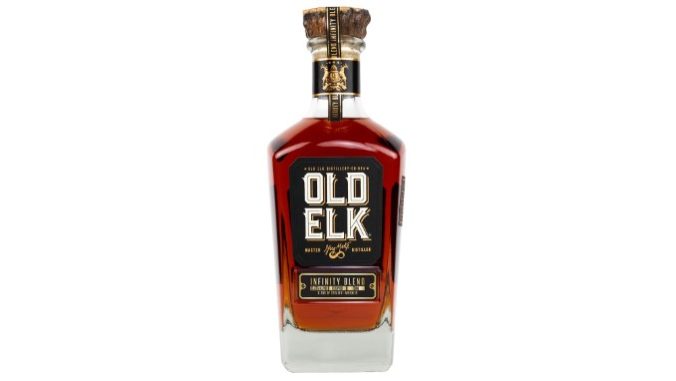
This is a bit of an awkward inclusion, as this product is labeled as the Old Elk Infinity Blend 2023, but it wasn’t actually released into the world until the beginning of 2024, so it qualifies. It’s an excellent gimmick, one that borrows from the philosophy behind the average whiskey geek’s infinity bottle–the base of each year’s new blend is the previous year’s blend. This could easily be just a gimmick, where the distillery would use some insignificant amount of the last year’s blend, but Old Elk and Master Distiller Greg Metze aren’t in the business of deceiving people. This year’s blend was also the first to exclusively be made from Old Elk’s own rapidly maturing product, including 8-year-old high malt bourbon, 7-year old wheat whiskey and even some 10-year-old Old Elk wheat whiskey, in addition to the portion of the 2022 Infinity Blend. The rich, decadent results speak for themselves, as I wrote when first tasting it:
On the nose, this is all warm, gooey caramel and vanilla bean up front, with lots of candied citrus immediately accessible as well. It smells quite sweet and inviting, though there are hints there of the wheat whiskey in the blend–a little doughy malt and breadiness that begins to emerge once you’re looking for it. The effect is like toasted white bread with cinnamon sugar and orange marmalade, met by the richness of creme brulee. I’m also getting a faint, delicate pepperiness, while ethanol is fairly restrained for the proof point. The overall effect is pretty luxuriant and rich. On the palate, the first thing one notes here is the really lovely, full mouthfeel, which brings a silky smooth texture to play. This is a flavorful eruption of warm caramel and especially juicy orange citrus, with traces of gingerbread and toasted malt syrup. Residual sweetness is moderate to high, giving this quite a decadent or luxurious feel, balanced somewhat by gentle cardamom earthiness and pepper spice, and gentle oak that is easily overlooked. It certainly hides its ABV well, and projects a sense of warm fuzziness, like a thick sweater. There’s a bit of the wheat whiskey breadiness here on the palate as well, but there’s enough maturity in the overall blend for the caramelized sugars to really steal the show. Overall, it’s a tad on the desserty side, but very satisfying.
Old Fitzgerald VVS 2024 (13 Year)
MSRP: $230
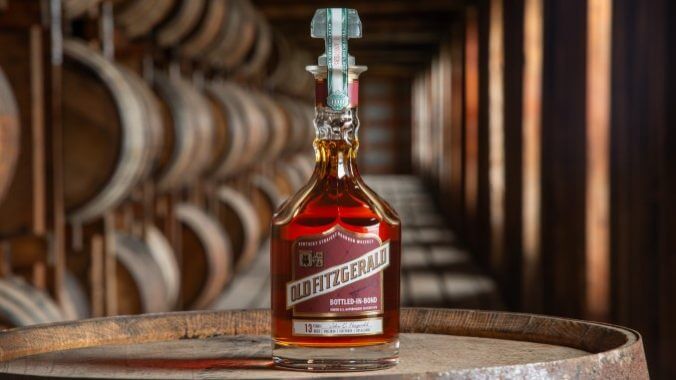
Various batches of Heaven Hill’s Old Fitzgerald wheated bourbon tend to attract varying levels of whiskey geek interest, given the way their age statements, etc. are allowed to significantly fluctuate. The presence of a “very very special” (VVS) batch, on the other hand, was an immediate feather in the cap of 2024, as there have only been two others to date bearing this red label, in 2018 and 2020. The 2024 VVS batch is a particularly unusual case, chosen to celebrate the 25th anniversary of Heaven Hill acquiring the historic Bernheim Distillery and Old Fitz brand in 1999–it’s a bourbon that was distilled in 1999, but it’s not “25 years old.” How is that possible? Well, the whiskey spent 13 years in oak after being distilled in 1999 and then has been saved in stainless steel ever since, waiting for the right occasion to be bottled. We’re fortunate this exemplary batch has finally seen the light of day, as I wrote when first tasting it:
On the nose, the initial impressions here are of very deep caramel and baked apple butter fruitiness, spread over gently toasted wheat bread. There’s some wet oak here as well, with a slightly tangy impression, along with sweetened peanut butter, gingerbread and a little cocoa. Spice components of nutmeg and spicy oak also get played up considerably, and it’s easy to nose all of this given the very mild ethanol. Layers and spice and some leather make this feel like a particularly mature expression. On the palate, these impressions are pretty much confirmed: The 2024 Old Fitzgerald VVS is a big, deep and oak-driven dram that really does stand out from other expressions the company has released to date. Heavy honey and caramel notes lead off, slathered over wheat toast, with stem ginger and spiced sugar. There’s a deep, mature oakiness split between the impression of barrel char (without astringency) and layers of baking spice. It’s a predominantly sweet profile, with just the occasional hint of drying tannin keeping it from reading too decadent. Repeat sips deep the impressions of rickhouse funk and some more earthy tones, even flashing some of the tobacco-type notes you might expect to find in the company’s older rye bourbons. Ethanol is again quite restrained, really allowing the mature nature of the spirit to shine through.
Parker’s Heritage #18 Malt Whiskey Cognac Barrel Finish
MSRP: $170
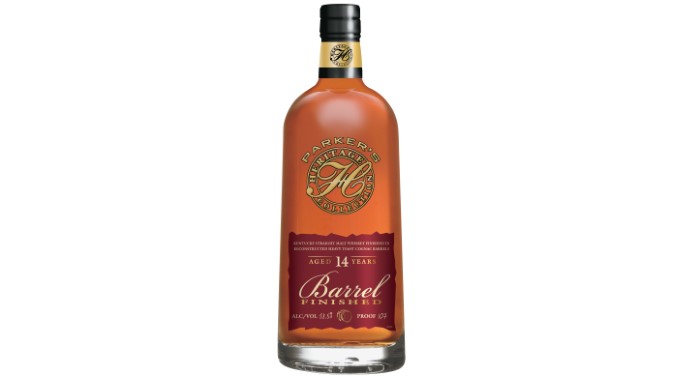
Between this and the preceding VVS Old Fitzgerald, it was a hell of a year for one-off special release expressions from Heaven Hill. This one fascinates me, as it illustrates the absolutely ridiculous patience inherent to running a huge spirits company of this nature. This is 14-year-old malt whiskey from Heaven Hill … see what I’m getting at? What malt whiskey brand does Heaven Hill produce? The answer would be “none”–the company has never had a flagship malt whiskey product. And yet they have 14-year-old expressions sitting around in their labyrinthine rickhouses, waiting to be discovered. It makes you wonder how many other novel spirits a company like this must be sitting on as well, or when they’ll finally launch a year-round American malt whiskey, as surely they must eventually do. Regardless, this whiskey finished in heavy toast reconstructed cognac barrels should make every American whiskey geek curious about Heaven Hill’s plans for malt whiskey, because it stands out as one of the tastiest bottles of the year, as I wrote when tasting:
On the nose, this liquid stands out immediately as possessing deeply toasty and very “dark” aromatics all around. It’s redolent in molasses and maple syrup, very dark chocolate and burnt sugars, with toasted oak and strong impressions of sticky dried fruit … like plums, drying in the sun. From time to time, a little more herbaceous complexity peeks through, but the overall vibe is very sweet, concentrated and desserty–big port wine or PX sherry-type vibes. It smells decadent and delightful. On the palate, this Parker’s Heritage expression is sweet and unctuous for this proof point, with very rich caramelized sugars, maple, toasted oak, molasses and significant baking spice. The dried fruitiness is present again, reinforcing that fortified wine-type impression, joined by sweet barrel char and mocha. Over time, a more savory, tobacco-like dimension is opening up as well. Alcohol heat is modest for the proof. All in all? This is positively decadent, an after-dinner whiskey for certain. I do think that lovers of extra-aged bourbon will actually adore this. In fact, I actually wouldn’t be surprised if they misidentified this release as bourbon if given it to taste blind, thanks to all the barrel presence and intensely caramelized wood sugars. Folks, this is good. Really good.
Remus Repeal Reserve VIII
MSRP: $100
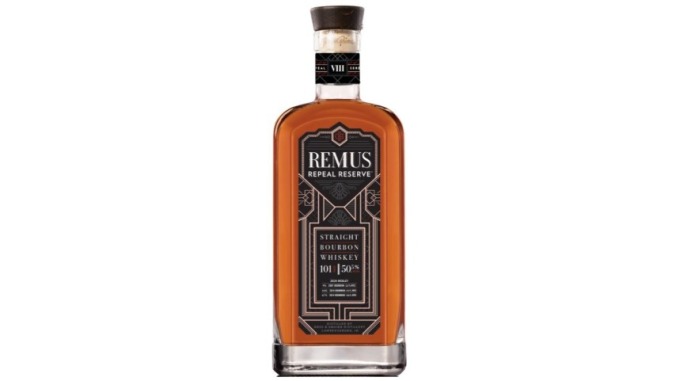
Now in its eighth expression, Remus Repeal Reserve evolved a bit this year, with the company revealing that there have been a handful of tweaks of relatively moderate seeming importance. As Master Distiller Ian Stirsman notes, the proportion of higher-rye bourbon is greater in this batch than typical for the series, and it also includes more of the extra-mature liquid than previous batches. Note that these are marginal increases–Series VII had 6% of a 16-year-old bourbon in the blend, while Series VIII has 9% of a 17-year-old bourbon in its blend. Still, these are the kinds of tweaks that can potentially make a substantial difference in the long run, as is the choice to non-chill filter this bourbon. The most inexplicable change is the bump to 101 proof, when all the previous expressions had been 100 proof. You have to wonder at the reasoning there. Its full specs are below. Regardless, this one punches above other recent batches.
— 9% a 17-year-old bourbon with 21% rye
— 24% a 10-year-old bourbon with 21% rye
— 67% a 10-year-old bourbon with 36% rye
On the nose, Repeal Reserve VIII displays deep, sweet oak and an element of roastiness evocative of sweet charcoal and a little leather. This certainly feels just older and more mature, and I think that a blind taster would note the extra signs of maturity here. There’s a lot of sweetness to be had on the nose in general, with toffee, vanilla pudding, some citrus and a little marzipan. It also trends in darker fruit directions, particularly with a dried fruit sort of dimension that touches on raisin. The nose here certainly draws you in. On the palate, this displays a nice balance between elements that are overtly sweet, roasty and spicy. Charred oak and sweet espresso lead the way, with baking spice character evoking cinnamon, allspice and clove. I’m getting toffee and significant toasted wood spice, while that dried dark fruit returns as well with slightly vinous raisin. All that oak does present some moderate tannin as well, which does turn the end of the sip a little more dry, although it’s really only enough to offer a counterpoint to the sweetness. Notably, this also displays a very soft and appreciably silky mouthfeel, a texture that I feel is probably superior to the last few years of this series–the non-chill filtering, perhaps. The overall impression is that this just feels notably more mature, and that comes across in a positive way.
Russell’s Reserve 15 Year Old Bourbon
MSRP: $250
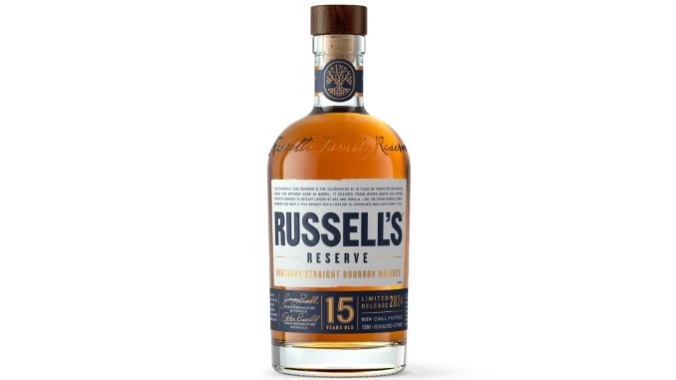
In terms of the specs, there’s nothing revelatory or gimmicky about this release from Wild Turkey, it’s just an even more mature version of presumably the same liquid that went into various Russell’s Reserve 13 batches, from Wild Turkey’s classic mash bill of 75% corn, 13% rye, and 12% malted barley. The barrels were drawn from the popular Camp Nelson rickhouse location, which is a cult favorite among Turkey devotees, and actually includes some 16-year-old distillate as well. It was bottled near cask strength at 58.6% ABV (117.2 proof), which is an increase from its initial distillation proof of 115, but some minimal amount of dilution was still added to meet Eddie Russell’s desired flavor profile. It carries a big MSRP of $250, which is still a touch under the now sky-high price of the Single Rickhouse series, but you can expect the secondary pricing to reach outlandish, stratospheric levels–not to mention the prices set by price gouging retailers. And really, it’s fair to ask if the bump of a couple years from Russell’s Reserve 13 can really justify another $100 of MSRP. But at least the results are still good, as observed when I first tasted it. Let’s just hope that future releases don’t push the woodiness to more unpalatable levels.
On the nose, the first things that jump out at you are bold impressions of both fruit and spice, which is a hallmark of these releases to me. It’s impressive how much brightness there still is in the fruity dimension of this bourbon, with lots of vivacious red reaspberry and darker blackberry compote, swirled with vanilla whipped cream. I’m also getting no shortage of toasted oak and nutty cocoa, along with toasted brown baking spices and wafts of marshmallow sweetness. The spice, meanwhile, begins to suggest ginger nut cookies, while traces of French roast coffee play on the edges. All in all, it’s a really great nose, hitting many elements that I love to find in Russell’s Reserve releases. On the palate, that fruitiness persists up front, while being simultaneously joined by big pepperiness and serious, chile-like spice and heat. I’m getting raspberry and cherry here, along with dark vanilla. This is joined by tons of roasted oak and a little smoke, in a way that continuously seems to grow throughout. This is where things take a turn into a more oak-driven dimension that begins to strain the enjoyability of the palate in my opinion, particularly when the damp oakiness takes a turn into overt tart, sour woodiness. Spice eventually regains more of its composure, with waves of hot cinnamon and clove, but the tannin contributed by these 15 years of aging is pretty serious, and it dries out the palate pretty substantially from sip to sip. There’s no missing that the oak has become a more commanding presence here than it was in the Russell’s Reserve 13. There’s still a whole lot to love here, particularly in the wonderful nose of this bourbon, but I find myself hoping that this isn’t leading to a Russell’s Reserve 17 or 18 Year Old release as the next in the series, or diminishing returns could really begin to set in.
Rosebank 31-Year-Old Single Malt Scotch Whisky
MSRP: $3,300
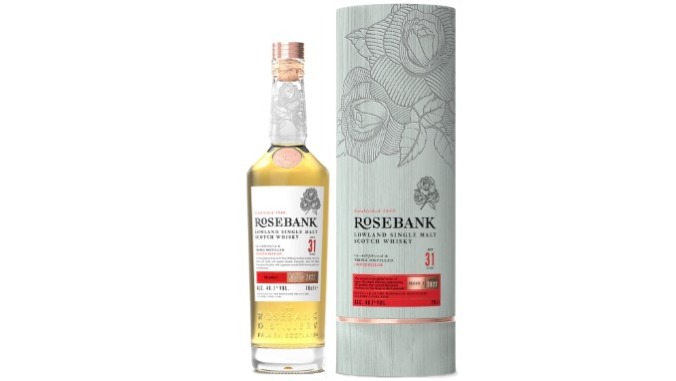
One glance at that MSRP and it should be clear enough that this won’t exactly be an easy dram to come by, but it is an impressive one. Rosebank is a Lowlands distiller that has more recently been revived, beginning whisky production again in 2023 after being acquired by Ian Macleod Distillers. That means it will be a long time before we likely see any of the modern Rosebank distillations reach any form of maturity, but in the meantime we’ve got some cuts from the vaults that are occasionally being released, like this 31-year-old standout from this year. As I wrote when tasting this unsurprisingly tiny sample:
On the nose, this is delicate and elegant, with fruity notes of baked apple and peach, apple butter and a hard-to-place grassy or herbaceous backbone. I’m getting vanilla, light toasted oakiness, some chamomile and subtly earthy character as well. It’s not the most intense nose, but a very nicely composed one. On the palate, Rosebank 31 Year-Old turns out to be significantly more expressive than it initially was on the nose, almost bombastic in its fruity and sweet notes. Here I’m getting plenty of toffee and glazed nuts, along with vanilla cream, peach, baked apple, citrus and a little cocoa giving a darker edge. The oak has contributed modest tannin over the years, as well as a slightly bitter, roasty edge that balances the big pop of sweetness you’re initially getting up front. All in all, really quite a tasty and well-balanced dram. Ethanol is quite subtle for the relatively higher 96.2 proof. All in all, “elegant” feels like the watchword here.
Sazerac 18-Year-Old Rye Whiskey
MSRP: $150
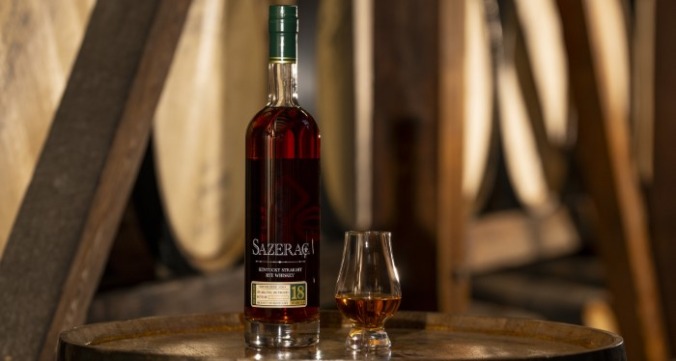
In previous lineups of the Buffalo Trace Antique Collection that I’ve tasted, Sazerac 18 Rye has often been my least favorite of the group, a brand that has occasionally been overtaken by the barrels thanks to its lower strength. The fact that it landed at #2 in my tasting of the 2024 BTAC expressions speaks to the fact that this is an absolutely stand out bottling of Sazerac 18 Rye, one that is more enticing than any previous expression of this particular whiskey I’ve ever tasted. It weighs in at 18 years and five months for its age statement, and at a mere 90 proof it’s the most immediately approachable of the series. Spoilers: When ranking the lineup I enjoyed the William Larue Weller even more, but for the purposes of this list I feel like it’s the Sazerac 18 that is the real “find” that whiskey drinkers should hunt down. As I wrote when tasting:
On the nose, this one presents with a lovely mélange of dried herbs, dried fruit and a really pleasant cocoa note. I’m getting some very nice toasted oak and gentle oak spice, with darker fruit notes (plum, dates?) than I typically find in this rye. There are layers of honey and more savory elements, with prominent leather, earthy rye and fresher mint. This just has layers to it, layers that are easily accessed with the only 90 proof point. On the palate, meanwhile, where this immediately jumps out is texturally–I can’t believe how thick and syrupy this whiskey reads on the tongue at only 90 proof. It must be one of the most decadently textured whiskeys I’ve ever come across at less than 50% ABV. That texture carries notes of honey toffee into big herbal rye and slight dried herb/resinous nose, along with pepper and baker’s cocoa. I’m getting a slight root beer spice, with sweetly charred oak and delicate tannin. This whiskey comes across as both decadent and elegant, and I’m honestly shocked to find myself loving it this much. Definitely the most pleasant surprise of the 2024 BTAC lineup.
Wild Turkey Master’s Keep Triumph Rye Whiskey
MSRP: $275
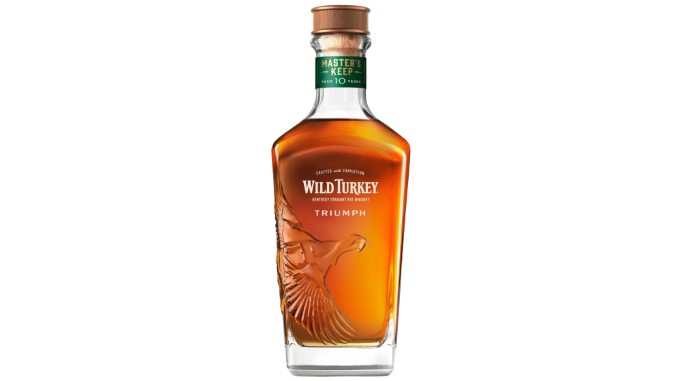
Master’s Keep Triumph has an easy selling point for whiskey geeks: It’s the oldest age-stated rye released by Wild Turkey to date, at 10 years. It’s easier to find comparable age stated ryes these days on package store shelves than it once was, but anything with a double digit age statement is still a relative rarity from Wild Turkey–particularly in the form of rye whiskey. Note that as always, the “10 years” denotes the youngest whiskey in the blend, as portions of this release are reported to be up to 12 years of age. It weighs in at 52% ABV (104 proof), with a high MSRP of $275, unfortunately indicative of the modern era of the Campari-owned distillery’s very expensive limited edition releases. It makes up for this by constantly engaging the palate, as I wrote when first tasting it:
On the nose, I’m immediately enjoying the interplay here between fruity, herbal and vanilla-type notes. There’s plenty of herbaceous, slightly grassy, rye, joined by a lighter floral vanilla, charred oak and pepper grinder, but also a fruitiness that puts me in mind of fresh figs and a little dried fruit as well. As it sits in the glass, I find the overtly charred woodiness softens and transitions into something more evocative of coffee roast and toastier oak impressions, with more baking spice coming to the front. Overall, it’s a lovely combination of sweet and spice.
On the palate, the same holds true. I expect that some whiskey geeks will tag this as having a definite “bourye” feel to it, as the sweetness and oak character are certainly evocative of a bourbon/rye blend. I’m getting plenty of fruit and baking spice here, with lots of dark fruitiness, slightly vinous currant and red licorice up front immediately, along with dark honey sweetness, espresso roast and a big charge of spicy oak. It has a complex spiciness that starts out more on the herbal end, with greener rye spice, fennel and pepper, and then transitions to sweeter, toasty baking spice notes of cardamom, cola and brown sugar. The oak brings both char and mild roasty astringency, and also savory notes of maturity with flashes of tobacco. My immediate impression here: This is really interesting stuff, appreciably complex and layered in its flavors.
![]()
The Best Additional Spirits (Rum, Agave, Gin and More) of 2024
As always, this isn’t just a whiskey game. You can call me a whiskey writer, and that will always be more or less correct, but I’ll always dedicate time to covering the rest of the spirits world as well, while making an impassioned plea for other drinkers to take the time to explore the world beyond bourbon in particular. At a time when price gouging and market forces have made whiskey a more unapproachable hobby than ever, this is a particularly good time to develop a greater interest in other spirits, where far better values can typically be found. Give them a try, and you may find a whole new world has opened up to you.
Appleton Estate Rum Hearts Collection 1998
MSRP: $650
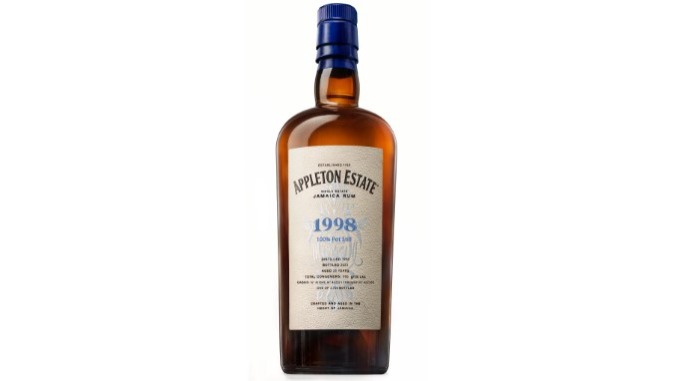
Appleton’s Hearts Collection is among the distillery’s most prized signature releases in recent years, and always consists of a handful of casks from a specific year–this year features 25-year-old pot still rums distilled in 1998. It’s a batch from 19 casks, yielding a mere 2,706 bottles globally, so the eye-popping $650 MSRP shouldn’t be a surprise. Previous releases in the Hearts Collection have included 1994, 1995, 1999, 1984, 2003, 1993, 2002 and 1998. As ever, Hearts Collection 1998 is bottled at cask strength, which in this case ends up being a commanding 63% ABV (126 proof). Master Blender Joy Spence unsurprisingly suggests adding at least a little bit of water as a result, advice that the rum geeks out there are likely to ignore, but I think it probably benefits the rum in this scenario. Regardless, this is a flavor bomb however you consume it, as I wrote when first tasting it:
On the nose, Hearts Collection 1998 displays bold, decadent notes of ripe fruit and molasses cake, although I will note that these notes didn’t really peak for me until it had been in the glass for a long time–I’m talking 30, 45 minutes before they were really shining through with the most beautifully sweet intensity, so you may want to be intentional about pouring this glass a good while before you’re going to start consuming it. Waves of dark dried fruit are met by fresher, juicy mango, dusted in cocoa powder, coffee and pencil shavings. There’s a real “fruitcake” kind of vibe to this, with flashes of old oak and warm spice. On the palate, this powerful rum follows through with notes of citrus, darker dried fruit, vanilla bean, molasses cake, roast coffee and sweetly charred oak, eventually venturing into more weathered territory with tobacco and old leathery notes. It finishes a bit more dry than the decadent sweetness up front would initially have you thinking, as all the oaky intensity begins to creep in after the initial rush of fruit and caramelized sugars. All in all, I would describe it as mildly decadent but still composed, with modest tannin and a little bit of pleasant astringency. Particularly with a splash of water, everything comes together pretty harmoniously. This is an elegant, lovely release from Appleton Estate, of the sort that we’ve now come to expect in the Hearts Collection.
Empress 1908 Cucumber Lemon Gin
MSRP: $40
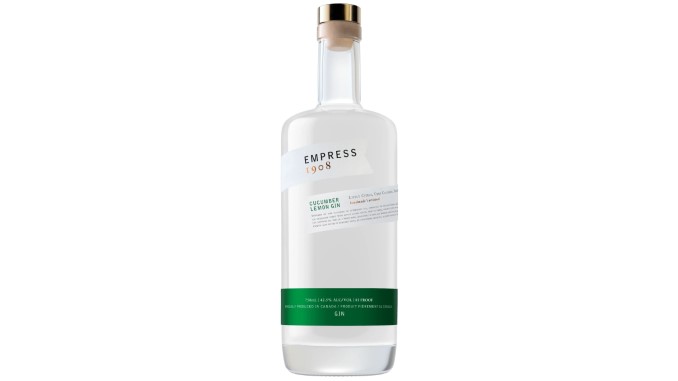
When gin consumers hear the Empress name, their imagination probably goes immediately to its famously purple flagship creation, but the 2024 release of Empress 1908 Cucumber Lemon Gin proves the brand doesn’t need a gimmick or coloration to make a splash. This gin has, as the name would imply, been infused with a heavy dose of garden cucumber and lemon peel, with those botanicals joined by the ubiquitous juniper, orange peel, jasmine, cardamom and others. It weighs in at a subtly elevated 42.5% ABV (85 proof), with an MSRP of $40, the same as the base Empress expression–but a bit higher than most other gin expressions on the shelf regardless. On the palate, it gives you exactly what you’d likely be hoping to get from that name, which I’d consider a win. As I wrote when first tasting:
On the nose, Empress 1908 Cucumber Lemon Gin immediately registers as very bright and fresh, though it doesn’t immediately scream “cucumber” the first pass you make over it. The “cuke” character is more on the subtle side here initially, or perhaps it’s just that the bright pop of juniper and especially citrus means you can’t immediately access the part of your brain that registers the cucumber. Instead this is quite zesty up front, with a solidly resinous juniper base and flecks of pink peppercorn and lemon/orange oil. Once the brain has time to process those, however, the cucumber starts emerging in earnest, with an increased fresh vegetal presence that gets stronger and stronger. On the palate, this is far more dramatically cucumber centric right away, being brightly vegetal and herbal, but equally citrusy as well. There is tons of semi-sharp lemon and rounder, juicier orange, held in check by resinous juniper and slightly hop-like bitterness or impressions of citrus pith. Subtle red berries round out the profile, while the cucumber character is very fresh, as if you had just muddled some partially peeled slices at the bottom of your glass. All told, the profile is pretty much exactly what you would be expecting from the name, no more and no less.
Gracias a Dios Tobalá Mezcal
MSRP: $80
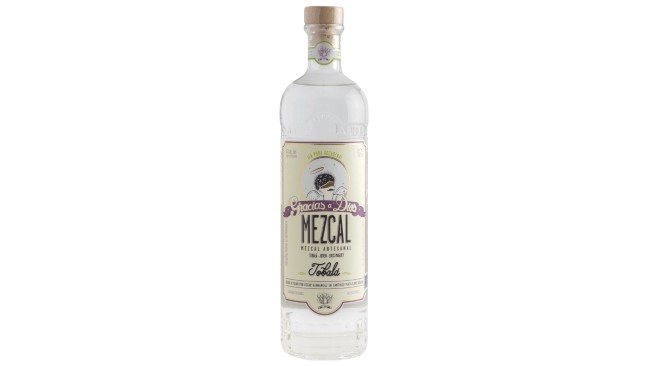
Each Gracias a Dios expression from owners Pablo Lopez, Enrique Jimenez, Xaime Niembro and Oscar Hernandez is a reflection of a single species of agave, with the Espadin expression functioning as a fairly affordable ($40 MSRP) flagship, and rarer agave varietals–many of which take longer to mature–commanding higher dollar figures. Each features a different flavor profile, though most are produced through the same traditional methods, cooking in conical earth ovens before fermentation in pine wood vats and double distillation in copper pot stills. The goal, unsurprisingly, is to capture as much terroir from each agave varietal as possible. This Tobalá mezcal is made from agave between 10-13 years old when harvested. It feels like the more conventional of the two expressions, the one that is more likely to be immediately familiar to the average tequila and mezcal consumer. As I wrote when tasting:
On the nose, this is rich in caramelized agave sweetness and grapefruit candy, with ribbons of more earthy mesquite. Initially, the nose registers as quite gentle in terms of real “smokiness,” though that characteristic does become more prominent over time as it sits in the glass. I’m getting butterscotch sweetness here, and floral notes, with the overall effect being something like a distant campfire as smelled from a citrus grove. On the palate, the first and immediately impressive thing here is how gentle this is in terms of texture and ethanol–even at the slightly elevated proof point, this is not hot at all, and is very accessible. I’m getting big cooked agave sweetness again, along with orange and grapefruit citrus, with a profile that then turns pretty strongly toward charred wood and smoke–all the smokiness that isn’t present so much on the nose really rallies to come forward on the back end here. That melds pretty well with sweetly floral tones and deep, rich herbal roastiness. In general, this feels like it would be pretty immediately approachable to most consumers who enjoy mezcal, and I’m sure it would do just fine in a mezcalita, or modern mezcal cocktail such as the Naked & Famous.
Highclere Castle Gin
MSRP: $35
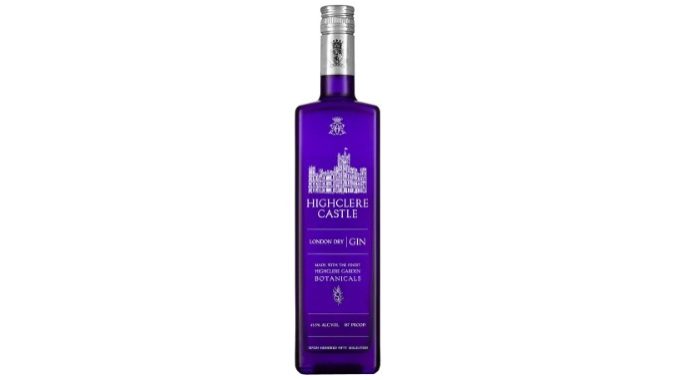
The titular Highclere Castle is an elegant country mansion, built in 1679 and located in Hampshire, England, in the southeast of the country. Its sprawling estate would seem quite familiar to many American media consumers even if they’ve never been to the U.K., for one critical reason: It was the primary site of filming for the majority of the series Downton Abbey, filling in for that titular estate. Thus, it make perfect sense that the estate would today have its own gin brand, which does indeed draw botanicals from plants grown on site.
Those botanicals describe a pretty classical London dry gin, featuring the obvious (juniper, citrus) along with other noted botanicals such as lavender, lime flower (linden), angelica, licorice, coriander, cardamom and cassia. One not-so-common addition is oats grown on the grounds, and typically reserved for the local horses. These are not part of the mash, as one might expect, but are instead added to the tea bag with the other botanicals. The company says this is meant to provide a fuller, smoother texture, though I haven’t previously heard of oats being able to grant that characteristic without being mashed to create the base spirit. Regardless, most of the recipe here is quite familiar. It’s really in the execution that Highclere Castle Gin ultimately shows its quality. As I wrote when tasting it:
On the nose, this is classical and quite aromatic, with big juniper throwing off lots of resin and a little rosemary, met by lightly perfumey florals and hints of lavender. There’s orange pith, and some brighter lemon oil, and modest spice notes of fresh pepper and coriander making for a classic experience. The palate of Highclere Castle Gin is vivacious and inviting, with considerable juniper and slight berry fruitiness chased by moderate spice notes evoking cardamom and coriander. There’s a slightly cedar-like woodiness coming along with the resinous juniper, and a juicy orange note becomes easier to place over time as well. Fairly dry overall, with just a prickly of heat that is spot on for the 87 proof, this is very comfortably familiar but also offers more robust character than many comparable London dry gins. At the end of the day, this gin is an argument in favor of playing the hits, but playing them well.
Mount Gay Single Estate Series Rum (24_02)
MSRP: $400
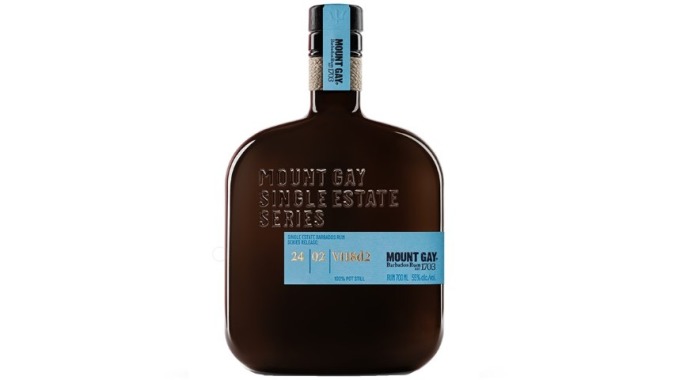
Unlike the first iteration of rum produced from Mount Gay’s own sugar cane estate in Barbados, this year’s 24_02 batch represents the continuing growth of the distillery’s farm by being made entirely from the sugar cane produced during a single harvest season. The 23_01 batch needed to be made with sugar cane/molasses/rums produced during both the 2016-2017 seasons because the fields planted by Mount Gay had presumably not yet reached full maturity. This is the 2018 harvest, which was large enough to weigh in at 1,695 tons of sugar cane, which became 136 tons of molasses, which became 5,418 bottles of rum at the end of the day. This relatively small, artisanal operation accounts for the eye-popping $400 MSRP, the cost of running a farm for eight years before putting out the first rum it would ever produce. Like last year, it’s bottled at a pretty robust 55% ABV (110 proof), this time in a blue label, in a bottle of 70% recycled glass. The good news? It’s an even better expression than the first batch in 2023, as I wrote when first tasting it:
On the nose, this one is boldly fruity and expressive, even in comparison with the first 23_01 batch. Big, bright citrus is a keystone, with notes evocative of orange oil and grapefruit, but there’s also a lot of banana, vanilla cream, milk chocolate and hazelnut. A little allspice puts a baking spice charge into the nose, which is fairly sweet and extremely inviting. The depth of fruitiness here is particularly lovely, working beautifully with the chocolate and spice to set your anticipation. On the palate, that combination of fruit and spice is both bold and inviting in much the same way. There’s lots of pineapple, banana and citrus, balanced by singed, slightly smoky oak. Banana pudding with vanilla wafers represents the sweeter side, but there’s also slightly overripe fruit and more vinous, prune-like dried fruitiness. This is faintly wild and funky, in a way somewhat similar to last year’s batch, with slight impressions of rubber, damp earth and briny smoke, but these notes are all present in quite a restrained, elegant way. The ethanol is likewise very restrained and gentle for the 110 proof, allowing you to really work out the individual notes on both the nose and the palate. Again, the depth of fruitiness really stands out in a showstopping way.
Stray Dog Wild Gin
MSRP: $35
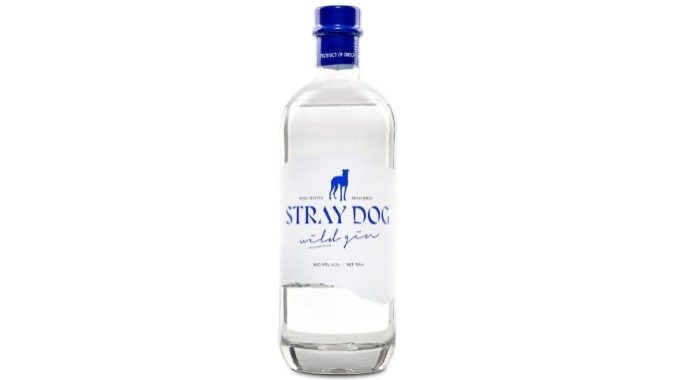
Stray Dog Wild Gin is a product of Greece, potentially the only Greek gin available on U.S. store shelves. Its theming revolves around wild foraged botanicals, most of which hail from the region of the Aridea Mountains, which also provide the water in this spirit. The company has the stated goal of capturing these Mediterranean flavors and infusing their essence into Stray Dog Wild Gin.
With that said, the majority of botanicals here are actually quite classical: Lemon, orange, rosemary, sage, coriander and cardamom are all the sort of thing you’d expect to find in many classic London dry gins. Where Wild Dog really embraces its home is in the use of mastiha or mastic, a substance that is effectively a type of tree sap, excreted by the resin glands of the mastic tree on the Greek isle of Chios. This edible resin can be chewed, reportedly having a bitter flavor that transitions into something more sweet and refreshingly resinous/herbal. The substance is referred to as the “tears of Chios,” for the teardrop shape of dried bits of sap. It sort of makes sense for this to function as one of Wild Dog’s signature flavors, and it yields a uniquely fresh and floral gin, as I wrote when first tasting it:
On the nose, Stray Dog Wild Gin is very fresh and bright indeed, featuring lemon-lime zestiness melding with sweet pine sap, modest juniper and the distinctly musty/earthy/citrus character of freshly cracked coriander. It’s also notably floral, with a profile that really trends toward the “verdant” side of the spectrum. You can easily imagine yourself strolling in a pine-cypress forest, nosing this. On the palate, this is again quite floral, herbal and decidedly “planty,” and appreciably on the dry side as well. It’s redolent in pine resin and the character I can only assume is contributed by the mastic, combined with minerality, savory sage, wild flowers, juniper, piercing lemon citrus and moderate bitterness. To make a possibly fanciful stylistic comparison, it has the same sort of combination of brightness, florals and bitterness you might find in a great German pilsner. Spice notes are more on the subtle side, but you can pick out the coriander in particular. Ethanol heat is mild to moderate, with an overall impression that plays as a nicely subtle variation on familiar gin tones.
Ten to One Five Origin Select Rum
MSRP: $65
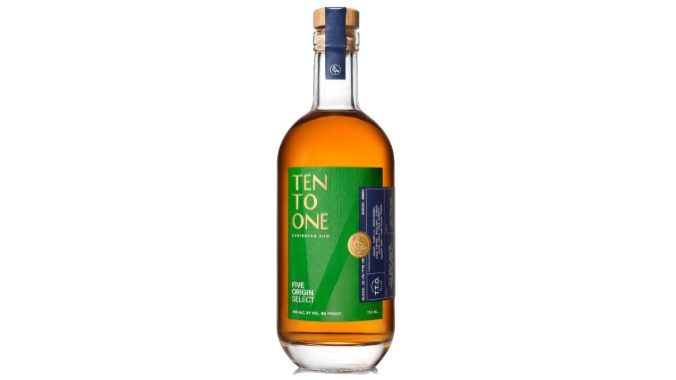
Ten to One has been pretty quiet in terms of line extensions since it launched in 2019, with just the occasional special release in addition to its excellent flagship White Rum and Dark Rum. That era has now come to an end, with the introduction of a new extra-aged blend, Five Origin Select. This is a permanent line extension, albeit one that will be available in limited quantities year round. It comes with the higher expected MSRP of $65, a modest bump from the $45 of the Dark Rum and $33 for the White Rum.
As the name would imply, this is a blend from five rum markets of the Caribbean–Trinidad, Barbados, Guyana, the Dominican Republic and Jamaica. The company points out its highlight of the blend is “11-15 year old Guyanese (demerara) rum distilled on the famed Port Mourant Double Wooden Pot Still,” which to rum fans obviously means a product of the sole Guyanese distiller, Diamond Distillery. Unfortunately, Ten to One doesn’t offer more detail or average age ranges for rums from the other ports, but it seems safe to assume this is likely a blend of younger and older distillates with an average age significantly higher than found in Ten to One Dark Rum, which is also a blend from four of the same ports, excluding Guyana. It’s clear that the intention here is more toward crafting a rum blend for neat drinking, with the increased complexity this implies. It’s bottled at a modestly elevated 46% ABV (92 proof), a nice level for a flavor-forward sipper. As I wrote when first tasting it:
On the nose, this rum deftly toes a line between subtly composed and rich. I’m getting nutty cocoa nibs and pear fruit, combined with dark stone fruit (like plum jelly), molasses cakes and flashes of fresher, grassy sugar cane. There are also dried fruit elements and a creeping caramelized sugar (with a little vanilla bean) that suggests creme brulee. On the palate, I’m getting gingerbread in spades, with dark brown sugar and lots of allspice as well. The dried fruit shows up again pretty strongly here, with raisin and prune, buoyed by brighter orange citrus and dulce de leche, along with baked apple. There’s a distinctly peppery lingering spiciness to the finish, and some aromatic oak. I can’t claim to be a great expert in Guyanese rum character specifically, but it seems lighter to me on the distinct Guyanese character than I might have expected, though I do attribute some of its distinctly spicy woodiness to the demerara spirit. All in all, the impression is more of balance than favoring any of its regions too strongly, and it’s easy to appreciate that.
Tequila Celosa Rosé Joven
MSRP: $140
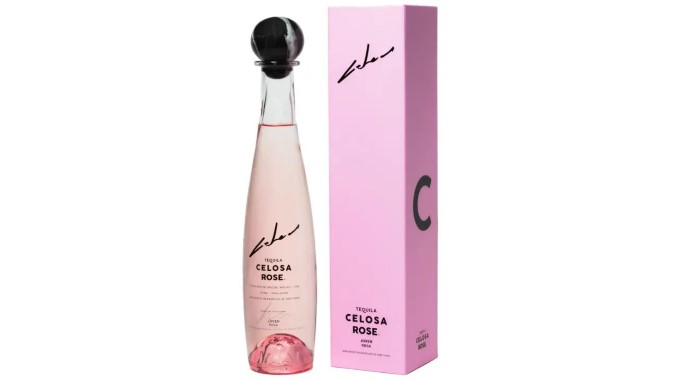
“Pink tequila” will always be a fairly gimmicky selling point, making one question whether the goal of secondary aging in red wine casks is really to pick up any particular character from those barrels or simply to gain a slight coloration conducive to marketing. But with that said: It works out quite well for this particular expression, though the $140 MSRP does give us pause, as there’s no real rationale for why exactly it is so elevated. This is effectively blanco tequila, which the company notes is the product of 7-year-old Blue Weber agave. The pinas are cooked via autoclave at NOM 1479 and double distilled in stainless steel pot stills, before being finished for a period of unknown length in French oak that previously held red wine from somewhere in California’s Napa Valley. The resulting spirit is bottled at the standard 40% ABV (80 proof) for the U.S. market, but it’s plenty flavorful. As I wrote when first tasting:
On the nose, this tequila leads off with earthy, roasty agave sweetness that is pretty vivacious and up front, combined with other sweeter impressions of orange peel, vanilla cake and a little distinct cherry. As is usually the case with this type of release, it can be difficult to draw a distinction between what you expect to taste because of appearance/finishing techniques and what you are actually tasting, but the fruit here thankfully isn’t subtle to the point of questioning its existence. There are also more mineral characteristics, and some petrichor/summer rain. On the palate this is round and pretty sweet, with a silky mouthfeel that stands out in a very pleasant way for the relatively low proof in particular. Mild to moderate peppery spice has been smoothed out here by vanilla cream, macerated strawberry and orange spice cake–Constant Comment tea, almost. There’s some rose petal-like florals, but it also doesn’t lose track at any point of the peppery, earthy roasted agave, which intertwines with stony mineral notes. Ethanol heat is extremely mild, making this quite approachable to practically any drinker.
Tequila Ocho Plata Puntas (2024)
MSRP: $75
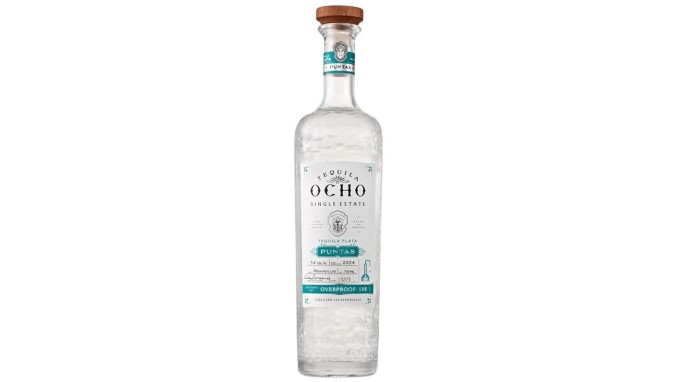
Heaven Hill’s Tequila Ocho continues to impress and build a sizeable cult among agave geeks even as it expands production, standing out among the pack as one of the purest expressions of traditional agave spirits out there. Few bottles in the tequila world have as much buzz as their annual Puntas release, “puntas” referring to the so-called “distiller’s cut” that encompasses the end of the “heads” to the beginning of the “hearts” of a distillation run, a cut that reportedly contains more of the delicate aromatic compounds that are so sought-after. Of course, the overproof nature of these releases (this one is 108 proof, a slight increase from the 2023 bottling) probably has something to do with their rapidly growing fandom as well. Between the rigidly traditional production methods, strict lack of additives and elevated strength, there are few ways to experience tequila more directly than this.
Poured into a tasting glass, the smell travels–from a few feet away I can already detect the roasted agave and butterscotch notes of the nose. I’m also getting pink grapefruit and a dried cranberry-like fruity brightness, along with tons of vanilla and butter, roasted agave sweetness and some pepper, although this doesn’t strike me as intensely spicy on the nose. In fact, it may not be quite as intensely aromatic as the 2023 batch, but it’s extremely inviting all the same. On the palate, things turn in the direction of richer cacao and vanilla cream notes, with more butterscotch and the sweet, cooked agave you would no doubt be hoping to find, supported by delicate pepper and more baking spice-type notes of cardamom and cinnamon. As is often the case for this series, the ethanol is incredibly well incorporated and gentle, allowing for easy neat drinking and nosing of the 108 proof spirit. All in all, another extremely impressive offering from one of the most head-turning tequila producers out there.
Jim Vorel is Paste’s Movies editor and resident genre geek. You can follow him on Twitter or on Bluesky for more film writing.
